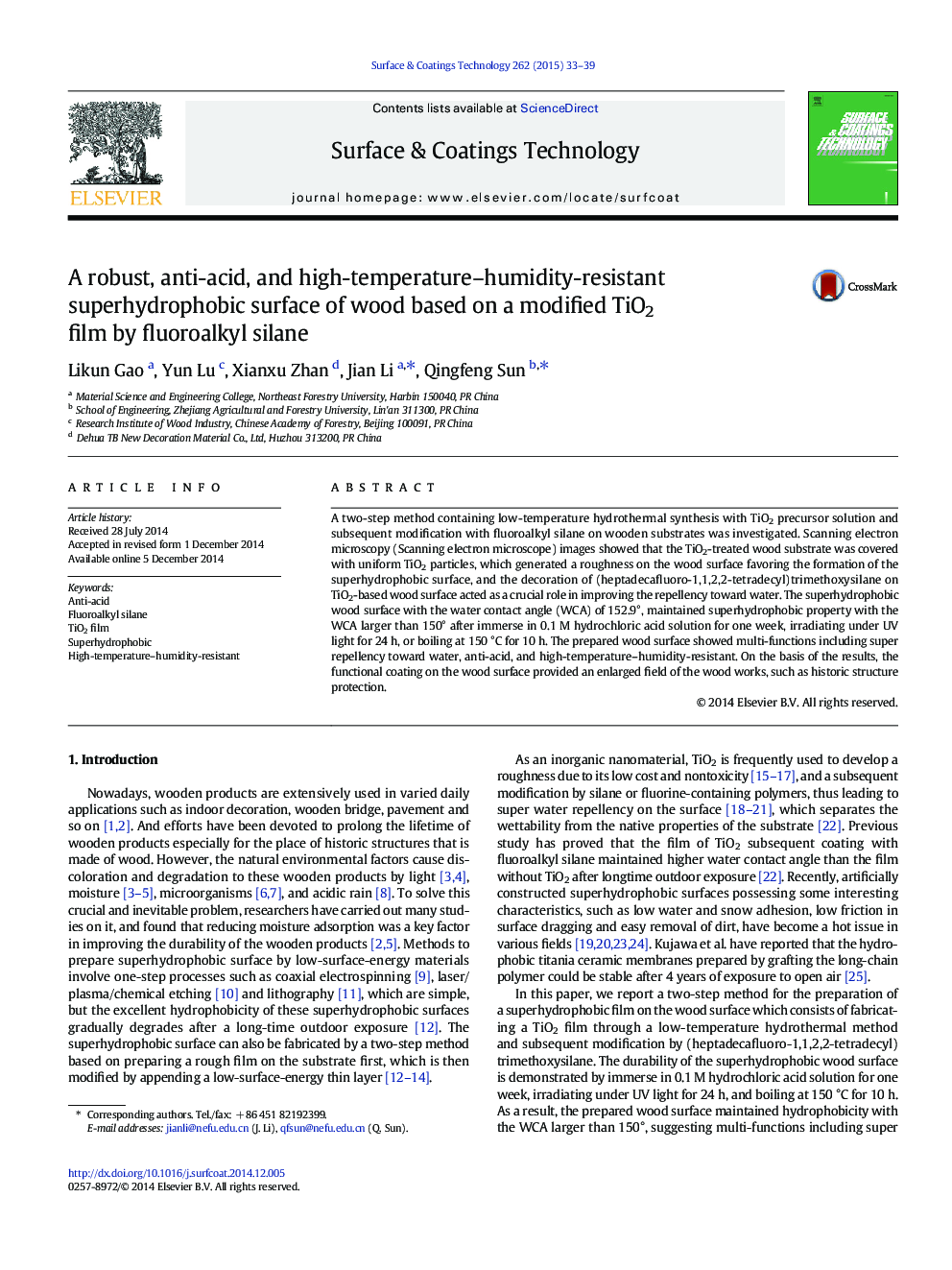| Article ID | Journal | Published Year | Pages | File Type |
|---|---|---|---|---|
| 1657192 | Surface and Coatings Technology | 2015 | 7 Pages |
•A robust superhydrophobic wood surface was achieved by a two-step method.•The prepared wood maintained superhydrophobicity under various conditions.•This research may provide a functional coating on wood surface.
A two-step method containing low-temperature hydrothermal synthesis with TiO2 precursor solution and subsequent modification with fluoroalkyl silane on wooden substrates was investigated. Scanning electron microscopy (Scanning electron microscope) images showed that the TiO2-treated wood substrate was covered with uniform TiO2 particles, which generated a roughness on the wood surface favoring the formation of the superhydrophobic surface, and the decoration of (heptadecafluoro-1,1,2,2-tetradecyl)trimethoxysilane on TiO2-based wood surface acted as a crucial role in improving the repellency toward water. The superhydrophobic wood surface with the water contact angle (WCA) of 152.9°, maintained superhydrophobic property with the WCA larger than 150° after immerse in 0.1 M hydrochloric acid solution for one week, irradiating under UV light for 24 h, or boiling at 150 °C for 10 h. The prepared wood surface showed multi-functions including super repellency toward water, anti-acid, and high-temperature–humidity-resistant. On the basis of the results, the functional coating on the wood surface provided an enlarged field of the wood works, such as historic structure protection.
